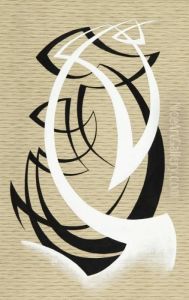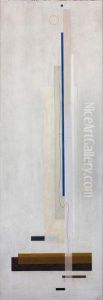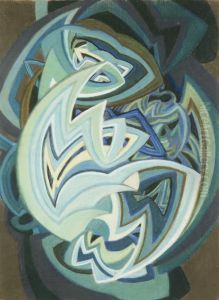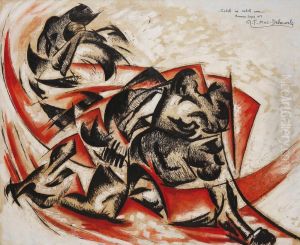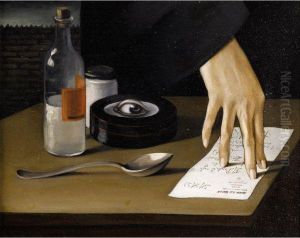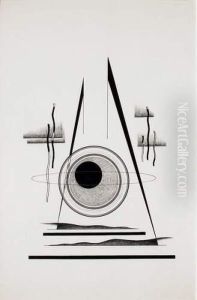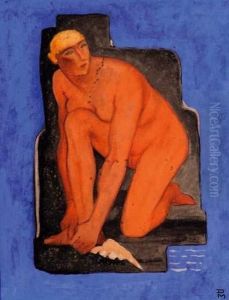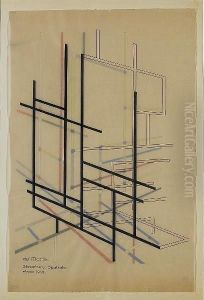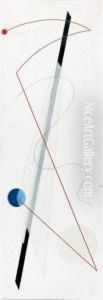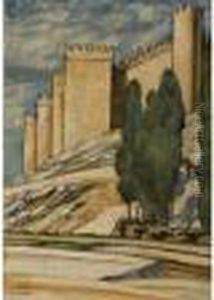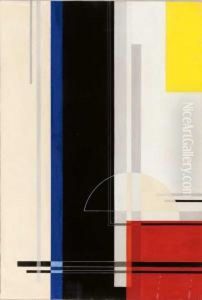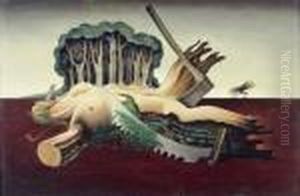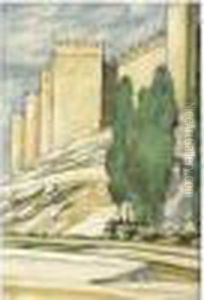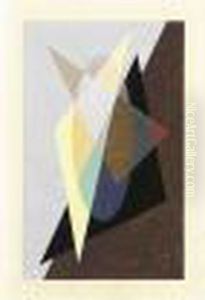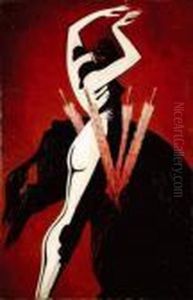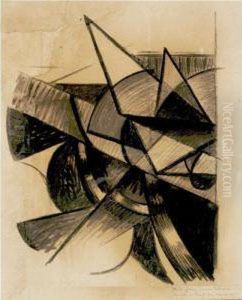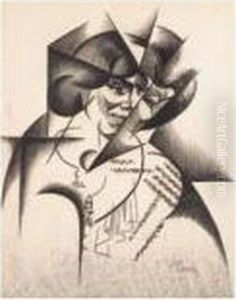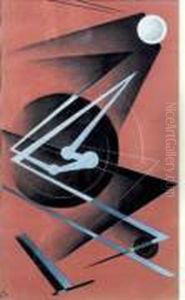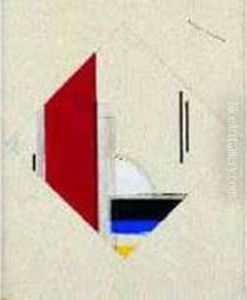Felix Aime Del Marle Paintings
Felix Aime Del Marle was a French painter, designer, and theorist affiliated with the avant-garde movement in the early 20th century. Born in Pont-sur-Sambre on December 29, 1889, Del Marle grew up during a period of radical innovation in art, characterized by a break from traditional forms and the exploration of new visual languages.
Del Marle initially studied at the École des Beaux-Arts in Lille. He later moved to Paris, where he was exposed to the burgeoning art movements of the time, including Cubism and Futurism. His work was particularly influenced by the dynamic and mechanistic aesthetics of Futurism, an Italian movement that glorified the technological era.
Throughout his career, Del Marle actively participated in various avant-garde groups. He was a founding member of the Section d'Or group in 1912, which promoted Cubism and Orphism, an offshoot of Cubism that focused on pure abstraction and bright colors. Del Marle's style evolved over time, incorporating elements of these movements as well as Constructivism, which he encountered during a trip to Russia in 1914.
After World War I, Del Marle became associated with the Vorticists, a British artistic movement that combined the speed and energy of modern life with a love for machine aesthetics. He also collaborated with other artists in the De Stijl movement and contributed to the development of the Abstraction-Création group in 1931, which advocated for non-objective art.
Del Marle's work extended beyond painting to include graphic design, stage design, and public monumental works. He was passionate about integrating art into everyday life and believed in the social and functional role of the artist in society. His theoretical writings and his commitment to the synthesis of art, architecture, and design reflected this belief.
Felix Aime Del Marle continued to produce art and engage with emerging trends up until his death on November 6, 1952. His legacy is that of an artist who was deeply immersed in the avant-garde movements of his time, and whose work exemplified the quest for new expressions in the rapidly changing world of the early 20th century.

